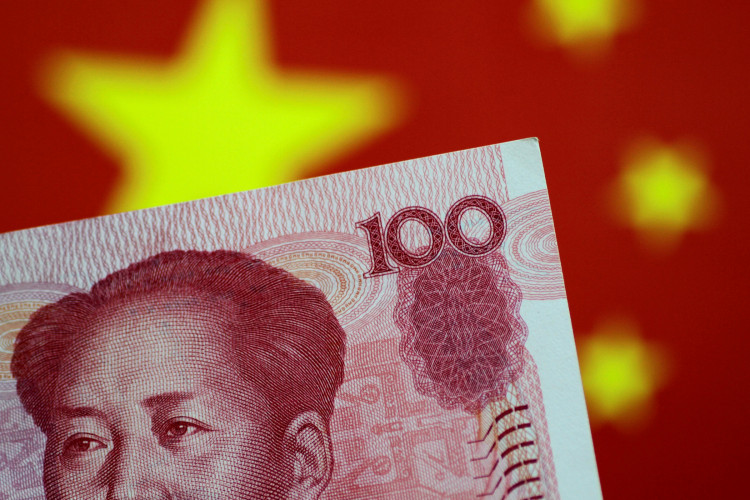China's central bank has rolled out its most significant monetary easing measures since the early days of the pandemic, aiming to invigorate the world's second-largest economy amid mounting deflationary pressures. However, economists caution that the People's Bank of China's (PBOC) actions may not address the core issue hindering growth: persistently weak consumer demand.
On Tuesday, the PBOC announced a reduction in the reserve requirement ratio (RRR), effectively lowering the amount of cash banks must hold in reserve. This move is expected to inject approximately 1 trillion yuan ($142 billion) into the financial system, increasing liquidity and potentially boosting lending to consumers and businesses.
Additionally, the central bank cut the interest rate on its Medium-Term Lending Facility (MLF) loans to financial institutions by 30 basis points to 2.0%, marking the first such reduction since July 2023. The PBOC also pledged to lower interest rates on existing mortgage loans, aiming to provide more disposable income to millions of Chinese homeowners and stimulate the struggling real estate market.
Despite these aggressive steps, analysts remain skeptical about the effectiveness of monetary policy alone in reviving China's economic momentum. "The central bank policies exceeded expectations, but the main problem in the economy today is not the lack of liquidity," said Shuang Ding, chief economist for Greater China and North Asia at Standard Chartered. "In terms of helping the real economy, I think there will be another policy package, especially fiscal policies."
Fred Neumann, chief Asia economist at HSBC, echoed this sentiment, emphasizing the need for measures that directly boost demand. "Authorities must boost demand, which could be done through other policy measures like fiscal policy," he noted.
China's economy has been grappling with a sharp property downturn, frail consumer confidence, and deflationary pressures, raising concerns that it may miss this year's growth target of around 5%. International financial institutions have lowered their growth projections for China, with Goldman Sachs and Citigroup now forecasting 4.7% growth, down by 0.2 and 0.1 percentage points, respectively.
While the PBOC's liquidity injections are substantial, there is doubt about their impact on actual lending and consumer spending. "Given weak credit demand from households and businesses, the 1 trillion yuan that would be released into the financial system may spur more sovereign bond buying than real economy lending," noted a report from China Beige Book.
Gavekal Dragonomics analysts described the scale of the monetary package as "modest," stating that similar measures in the past had minimal economic impact. "The significance of this package is thus mostly in whether it opens the door to other moves," they said.
The cuts in existing mortgage rates are expected to release an extra 150 billion yuan annually to households. However, Raymond Yeung, chief Greater China economist at ANZ, pointed out that Chinese consumers tend to save rather than spend extra income. "Chinese consumers spend just 35 yuan of any extra 100 yuan they receive," he estimated.
Economists argue that only fiscal policies that put money directly into consumers' pockets through higher pensions, increased social benefits, or subsidies can effectively stimulate demand. "This is the most significant PBOC stimulus package since the early days of the pandemic," said Julian Evans-Pritchard, an analyst at Capital Economics. "But on its own, it may not be enough."
He suggested that additional fiscal stimulus might be necessary for China to meet its growth targets. "If China hopes to meet its official growth target of around 5%, additional fiscal stimulus may be needed," Evans-Pritchard added.
Some analysts believe that the PBOC's actions could pave the way for increased government spending. "By injecting liquidity, the PBOC provides more room for the government to issue debt for any extra stimulus," said HSBC's Neumann. "What the market is hoping for is that the liquidity injections signal a potential announcement in the coming weeks for a big bond issuance program."
China has moderated its growth targets in recent years, shifting focus toward "high-quality growth" and prioritizing state-directed development of strategic industries like green energy. However, the economy has struggled to recover fully since the end of pandemic-era restrictions in late 2022, with low consumer confidence and high youth unemployment continuing to weigh on the recovery.
The Chinese embassy in the U.S. did not immediately respond to a request for comment.
As Beijing navigates its economic challenges, the debate continues over the most effective strategies to stimulate growth. While the PBOC's monetary easing is a significant step, many experts assert that without accompanying fiscal measures to boost consumer spending, China's economic recovery may remain subdued.






